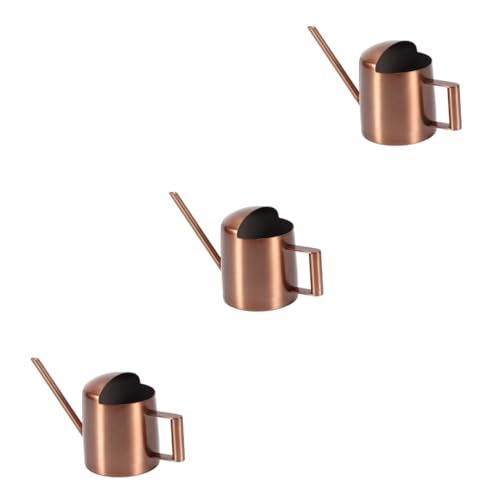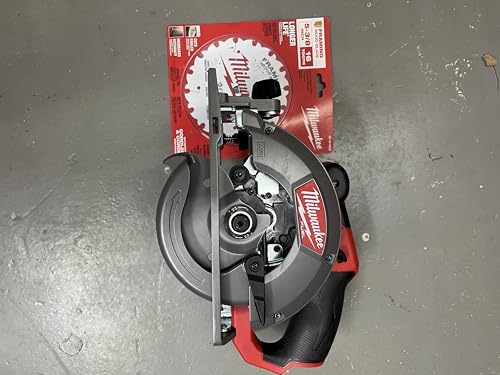




Bonsai trees require careful attention and a delicate balance of moisture to thrive and grow. When it comes to watering bonsai, one must take into consideration the type of soil used, such as potting compost.
Potting compost is a common soil mix used for bonsai cultivation. It is a blend of organic matter, such as peat moss or coconut coir, and inorganic matter, such as perlite or pumice. This type of soil provides adequate drainage while retaining some moisture, making it ideal for bonsai. However, determining how much water to give to a bonsai tree planted in potting compost can be a bit tricky.
The general rule of thumb for watering bonsai with potting compost is to water thoroughly until the water drains out of the drainage holes at the bottom of the pot. This ensures that the soil is evenly moistened and any excess water is removed, preventing waterlogging and root rot. However, it is essential not to overwater the tree, as excessive moisture can suffocate the roots and lead to fungal diseases.
It is important to monitor the moisture level of the potting compost between waterings. This can be done by gently inserting a wooden stick or a finger into the soil. If the stick or finger comes out relatively dry, it indicates that the bonsai tree needs watering. On the other hand, if the stick or finger comes out damp or with soil clinging to it, it is a sign that the tree has sufficient moisture and does not require immediate watering.
Factors such as the climate, the size of the bonsai pot, and the specific species of bonsai tree also affect the watering frequency. In warmer and drier climates, bonsai trees may require watering more frequently, while in cooler and more humid climates, watering should be done less often. Additionally, smaller pots tend to dry out more quickly than larger pots, so bonsai trees in smaller pots may need more frequent watering.
Understanding the watering needs of bonsai
Watering is a critical aspect of successfully growing bonsai trees. Understanding the watering needs of bonsai is essential to ensure their health and vitality. Here are some important factors to consider:
Type of soil
The type of soil used in bonsai cultivation plays a significant role in determining the watering needs of the plant. Well-draining soil is essential to prevent waterlogged roots and root rot. A mix of Akadama, pumice, and lava rock is commonly used for bonsai cultivation due to its excellent drainage properties.
Size of the bonsai pot
The size of the pot also affects the watering needs of a bonsai tree. Smaller pots tend to dry out faster compared to larger ones and may require more frequent watering. It is important to monitor the moisture level of the soil regularly and water accordingly.
Environmental factors
The climate and environmental conditions, such as temperature and humidity levels, have a significant impact on the watering needs of bonsai. During hot and dry weather, bonsai trees may require more frequent watering to prevent dehydration. On the other hand, during cooler and more humid conditions, watering can be reduced to avoid over saturating the soil.
It is crucial to observe and understand the specific needs of your bonsai tree. The best way to determine when to water is by checking the moisture level of the soil. Stick your finger about an inch into the soil; if it feels dry, it’s time to water. However, if it feels moist, it is best to wait before watering again.
Overwatering and underwatering are common mistakes made in bonsai care. Both can have detrimental effects on the health of your tree. A good practice is to develop a watering routine based on observation and the specific needs of your bonsai.
Remember, each bonsai tree is unique, and there is no one-size-fits-all approach to watering. Regularly checking the moisture level, considering soil type, pot size, and environmental factors, will help you maintain a healthy and thriving bonsai tree.
The importance of water for bonsai growth
Water is a crucial element in the growth and development of bonsai trees. Bonsai trees require regular watering to ensure their overall health and vitality. Adequate water supply is essential for the absorption of nutrients and their distribution throughout the tree.
Water plays a significant role in bonsai growth by enabling photosynthesis, a process vital for tree survival. During photosynthesis, water is used by the tree to convert sunlight into energy, which fuels its growth. Without sufficient water, the tree’s ability to photosynthesize is compromised, leading to stunted growth and poor health.
In addition to facilitating photosynthesis, water also helps regulate bonsai tree temperature. The process of transpiration, where water is evaporated from the leaves, cools down the tree and prevents it from overheating. This cooling effect is especially beneficial during hot summer months.
Proper watering techniques are crucial for maintaining the health of bonsai trees. Overwatering can lead to root rot and other fungal diseases, while underwatering can result in dehydration and nutrient deficiency. It is important to strike a balance and water the bonsai tree adequately based on its specific needs, taking into account factors such as soil type, climate, and the stage of growth.
When watering a bonsai tree, it is recommended to use a gentle watering technique such as a watering can with a fine rose attachment or a soft spray nozzle. This helps prevent soil erosion and damage to the tree’s delicate roots. It is also essential to water the entire root system thoroughly, ensuring that water reaches all parts of the potting compost.
Regular monitoring of the soil moisture levels is essential to prevent under or overwatering. One way to check moisture levels is by using a moisture meter, which can help determine when it’s time to water the bonsai tree. It is also important to note that water requirements may vary depending on the season, with increased watering needs during hot and dry periods.
In conclusion, water is a critical component in the growth and development of bonsai trees. It aids in the process of photosynthesis, regulates temperature, and ensures the overall health and vitality of the tree. Proper watering techniques and monitoring of soil moisture levels are essential for maintaining the health and longevity of bonsai trees.
Factors to consider when watering bonsai with potting compost
When it comes to watering bonsai with potting compost, there are several factors to consider in order to ensure the health and well-being of your tree. One of the most important factors is understanding the specific needs of your particular bonsai species. Different species have different water requirements, and it is crucial to research and understand the specific needs of your tree.
1. Soil Composition
The composition of the potting compost used for your bonsai can greatly impact its water retention capabilities. Some mixes may be more prone to drying out quickly, while others may retain water for longer periods of time. It is important to choose a potting compost that is well-draining yet retains enough moisture to sustain the bonsai.
2. Bonsai Pot Size
The size of the bonsai pot also plays a role in watering requirements. Smaller pots tend to dry out faster, requiring more frequent watering, while larger pots may retain moisture for longer periods of time. Consider the size of your bonsai pot when determining how often to water.
3. Environmental Factors
Environmental factors such as temperature, humidity, and sunlight exposure can also affect the watering needs of your bonsai. Hotter or drier conditions may require more frequent watering, while cooler and more humid conditions may require less. Monitor the conditions in which your bonsai is placed and adjust your watering schedule accordingly.
4. Watering Techniques
Proper watering techniques are essential for the health of your bonsai. Overwatering or underwatering can both be harmful to the tree. It is recommended to thoroughly water the bonsai until the water flows out of the drainage holes at the bottom of the pot, ensuring that the entire root system is hydrated. Allow the soil to slightly dry out before watering again, as this promotes healthy root growth and prevents waterlogged conditions.
By considering these factors and closely monitoring the watering needs of your bonsai with potting compost, you can ensure that your tree remains healthy, thriving, and beautiful for years to come.
Proper watering techniques for bonsai with potting compost
Watering is one of the most important aspects of bonsai care. It is crucial to ensure that your bonsai receives the right amount of water to thrive. When it comes to bonsai planted in potting compost, there are a few key techniques to keep in mind.
1. Check the moisture level
Before watering your bonsai, it’s essential to check the moisture level of the potting compost. Stick your finger about 1 inch into the soil to determine if it feels dry or moist. If the soil feels dry, it’s time to water the bonsai.
2. Water thoroughly
When watering bonsai with potting compost, it is crucial to water thoroughly. This means applying water until it flows out of the drainage holes at the bottom of the pot. This ensures that the roots receive adequate hydration and helps flush out any excess salts or minerals from the soil.
3. Avoid overwatering
Overwatering is a common mistake that can lead to root rot and other issues. It’s important to remember that bonsai in potting compost require less water compared to those planted in regular garden soil. Allow the soil to dry out slightly between watering sessions to prevent overwatering.
4. Use the right watering tool
Using the right watering tool can make a significant difference in the health of your bonsai. A narrow-spout watering can or a hose attachment with a fine mist nozzle can help distribute water evenly and prevent soil erosion. Avoid using a watering can with a wide spout as it may disturb the soil and damage the delicate roots.
5. Consider environmental factors
Environmental factors such as temperature, humidity, and air circulation also play a role in determining how often you should water your bonsai. In drier and warmer conditions, bonsai may require more frequent watering. Similarly, humidity levels influence the rate at which the soil dries out. Monitor these factors and adjust your watering routine accordingly.
By following these proper watering techniques, you can ensure that your bonsai planted in potting compost remains healthy and thrives. Remember to regularly check the moisture level, water thoroughly but avoid overwatering, use the right watering tool, and consider environmental factors for optimal care.
Tips for maintaining the right moisture level in bonsai with potting compost
Maintaining the right moisture level in bonsai with potting compost is crucial for the health and success of your plants. Here are some useful tips to help you keep your bonsai properly hydrated:
| Tip | Description |
|---|---|
| 1 | Check the moisture level regularly |
| 2 | Water the bonsai when the top layer of the compost feels slightly dry |
| 3 | Avoid overwatering |
| 4 | Use the right watering technique |
| 5 | Consider the climate and environment |
| 6 | Use a moisture meter |
| 7 | Provide proper drainage |
| 8 | Pay attention to signs of underwatering or overwatering |
By following these tips, you can ensure that your bonsai with potting compost receives the right amount of water and stays healthy and thriving. Remember, the moisture requirements may vary depending on the bonsai species, so it’s essential to research and understand the specific needs of your plant.









